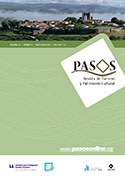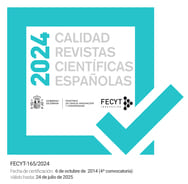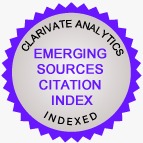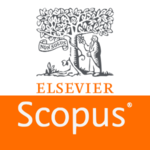Imagined men: representation of male bodies and masculinities in tourism advertising in Brazil and Costa Rica
DOI:
https://doi.org/10.25145/j.pasos.2025.23.026Keywords:
Tourism, Hegemonic masculinity, Gender, Brazil, Costa RicaAbstract
This article analyses how the male body is represented in two specific campaigns by the official tourism media in Brazil and Costa Rica, aimed at potential local travellers. Through a critical visual analysis, we identified the presence of four recurring categories: the heroic body as an expression of domination and/or exploration and movement; the body that embodies modern Western ideals about family and heteronormativity; non-hegemonic masculinities embodied in men who serve as hosts; and finally, absent masculinities, or men who do not appear, such as older men or men with non-hegemonic biotypes, performing adventures or heroic deeds, black men as adventurers or gay men with their couples or diverse families. The analysis shows that the two campaigns are guided by imaginaries that reproduce a system of gender norms and notions that bring the representation of men closer to that of a hegemonic model of masculinity.
Downloads
Publication Facts
Reviewer profiles N/A
Author statements
- Academic society
- PASOS. Revista de Turismo y Patrimonio Cultural
- Publisher
- Instituto Universitario de Investigación Social y Turismo. Universidad de La Laguna (España) - Instituto Universitario da Maia ISMAI (Portugal)
References
Almeida, M. V. de. (1995). Senhores de Si: Uma interpretação antropológica da masculinidade. Lisbon: Etnográfica Press.
Barboza Núñez, E. (2017). El enclave turístico y la imagen del “buen salvaje” americano: un abordaje iconográfico. Estudios y Perspectivas En Turismo, 26(4), 760–780. http://www.scielo.org.ar/pdf/eypt/v26n4/v26n4a01.pdf
Bell, E. (2008). Theories of Performance. Los Angeles: Sage.
Bruner, E. (2005). Culture on Tour: Ethnographies of Travel. Chicago: University of Chicago Press
Campbell, J. (2004). The Hero with a Thousand Faces. Princeton: Princeton University Press.
Connell, R. (2003) Masculinities. Berkeley. University of California Press
Connell, R. W., & Messerschmidt, J. W. (2005). Hegemonic masculinity rethinking the concept. Gender and Society, 19(6), 829–859. https://doi.org/10.1177/0891243205278639
Coles, T.& Church, A. (2007). Tourism, Politics and the Entanglements of Power. In A. Church & T. Coles (Eds.), Tourism, Power and Space. Oxford: Routledge.
Crouch, D. (2007). The power of the tourist encounter. In A. Church & T. Coles (Eds.), Tourism, Space and power, 45-62, Oxford: Routledge
Edensor, T. (2001). Performing tourism, staging tourism. Tourist Studies, 1(1), 59–81. https://doi.org/10.1177/146879760100100104
Enloe, C. (2014). Bananas, Beaches and Bases: Making Feminist Sense of International Politics. Berkeley: University of California Press.
Figueroa-Domecq, C., de Jong, A., & Williams, A. M. (2020). Gender, tourism & entrepreneurship: A critical review. Annals of Tourism Research, 84(July). https://doi.org/10.1016/j.annals.2020.102980
Forsey, M., & Low, M. (2014). Beyond the production of tourism imaginaries: Student-travellers in Australia and their reception of media representations of their host nation. Annals of Tourism Research, 44, 156–170. https://doi.org/https://doi.org/10.1016/j.annals.2013.09.008
Frohlick, S., & Johnston, L. (2011). Naturalizing bodies and places. Tourism Media Campaigns and Heterosexualities in Costa Rica and New Zealand. In Annals of Tourism Research (Vol. 38, Issue 3, pp. 1090–1109). https://doi.org/10.1016/j.annals.2011.01.012
Instituto Costarricense de turismo (2021). Vamos a turistear. Available at: https://www.vamosaturistear.com/ (4/12/2022)
Jiménez, A. (2002). El imposible país de los filósofos. San José: Editorial de la Universidad de Costa Rica.
Jordan. F. (2007). Life’s a beach and then we diet: Discourses of tourism and the ‘beach body’ in UK women’s lifestyle magazines. A. Pritchard, I. Ateljevic, N. Morgan, C. Harris (Eds.), Tourism and gender: Embodiment, sensuality and experience. Wallingford, Oxon: CABI Publishing pp. 92-106.
Kimmel, M. S. (1998). A produção simultânea de masculinidades hegemônicas e subalternas . Horizontes Antropológicos, 4(9), 103–117. https://doi.org/10.1590/S0104-71831998000200007
Kimmel, M. S. (2005). The History of Men, The History of Men, The: Essays on the History of American and British Masculinities. State University of New York Press. https://muse.jhu.edu/book/4899
Kimmel, M. S. (2010). Masculinity as homophobia: Fear, shame, and silence in the construction of gender identity. In S. R. Harper & F. Harris III (Eds.), College men and masculinities: Theory, research, and implications for practice, p. 23–31.
Kock, F., Josiassen, A., & Assaf, A. G. (2016). Advancing destination image: The destination content model. Annals of Tourism Research, 61, 28–44. https://doi.org/10.1016/J.ANNALS.2016.07.003
Little, D. E., & Wilson, E. (2005). Adventure and the gender gap: Acknowledging diversity of experience. Loisir et Societe, 28(1), 185–208. https://doi.org/10.1080/07053436.2005.10707676
Lozanski, K. (2015). Heroes and Villains: Risk and Masculinity. In Thurnell-Read and Casey (Eds.) Men, Masculinities, Travel and Tourism. London: Palgrave Macmillan.
Ministério do Turismo. (2021). Advertising campaign by the Brazil Ministry of Tourism. Available at: https://www.gov.br/turismo/pt-br/assuntos/campanhas/viva-de-perto (4/12/2022).
Molina, I. (2003). Costarricense por dicha: identidad nacional y cambio cultural en Costa Rica durante los siglos XIX y XX. San José: Editorial de la Universidad de Costa Rica.
Moutinho, L. (2014). Diferenças e desigualdades negociadas: Raça, sexualidade e gênero em produções acadêmicas recentes. Cadernos Pagu, 42, 201–248. https://doi.org/10.1590/0104-8333201400420201
Noy, C. (2007). Travelling for masculinity: The construction of bodies/spaces in Israeli backpackers’ narratives. In Prichard et al (Eds) Tourism and Gender Embodiment, Sensuality and Experience. Oxford: CABI
Piscitelli, A. (1998). Gênero em perspectiva. Cadernos Pagu, 11, 141–155. https://periodicos.sbu.unicamp.br/ojs/index.php/cadpagu/article/view/8634469/2393
Pritchard, A., & Morgan, N. J. (2000). Privileging the male gaze: Gendered tourism landscapes. Annals of Tourism Research, 27(4), 884–905. https://doi.org/10.1016/S0160-7383(99)00113-9
Pritchard, A. (2014). Gender and feminist perspectives in tourism research A. Lew, C.M. Hall, A. Williams (Eds.), A tourism companion (2nd ed.), Blackwell, Oxford (2014), pp. 314-324
Porter, B. A., Schänzel, H. A., & Cheer, J. M. (Eds.). (2021). Masculinities in the field: Tourism and transdisciplinary research. Channel View Publications.
Richter, L. (1994) “Exploring The Political Role of Gender in Tourism Research”.In T. William (ed). Global Tourism. Oxford: Butterworth Heiwemann.
Rizzo, M. (2014). The Art of Direction Handbook for Film. New York: Focal Press.
Rose, G. (2001). Visual Methodologies: An Introduction to the Interpretation of Visual Materials. London: Sage
Saffioti, H. (2015). Gênero, patriarcado, violencia. Sao Paulo: Expressão Popular.
Salazar, N. B. (2009). Imaged or Imagined ? Cahiers d’études Africaines, 44(1–2), 49–71.
Salazar, N. B. (2012). Tourism Imaginaries: A Conceptual Approach. Annals of Tourism Research, 39(2), 863–882. https://doi.org/10.1016/j.annals.2011.10.004
Schroeder, J. E., & Zwick, D. (2004). Mirrors of Masculinity: Representation and Identity in Advertising Images. Consumption Markets & Culture, 7(1), 21–52. https://doi.org/10.1080/1025386042000212383
Schroeder, J. E. (2006) Critical Visual Analysis. Handbook of qualitative methods in marketing, Russell Belk, ed., pp. 303-321, Aldershot, UK: Edward Elgar.
Scott, J. (1995). Gender on the Politics of History. New York: Columbia University Press.
Seyferth, G. (1993). A invenção da raça e o poder discricionário dos estereótipos. Anuário Antropológico, 18(1), 175–203. https://periodicos.unb.br/index.php/anuarioantropologico/article/view/6581/7559
Shohat, E & Stam, R. (2001). Unthinking Ethnocentrism: Multiculturalism and the Media. London: Routledge
Small, J. (2017). Women’s “beach body” in Australian women’s magazines. Annals of Tourism Research, 63, 23–33. https://doi.org/10.1016/j.annals.2016.12.006
Thurnell-Read, T. & Casey, M. (Eds) (2015). Introduction. Men, Masculinities, Travel and Tourism. Basingstoke: Palgrave MacMillan.
Wijesinghe, S. N. R., Mura, P., & Tavakoli, R. (2020). A postcolonial feminist analysis of official tourism representations of Sri Lanka on Instagram. Tourism Management Perspectives, 36(July), 100756. https://doi.org/10.1016/j.tmp.2020.100756
Winter, C. (2007). Tourism, Nation and Power: A Foucauldian Perspective of Australia’s Ghan Train. In A. Church & T. Coles (Eds.), Tourism, Space and power, 45-62, Oxford: Routledge
Downloads
Published
How to Cite
Issue
Section
License
Copyright (c) 2024 Rita, Esteban

This work is licensed under a Creative Commons Attribution-NonCommercial-NoDerivatives 4.0 International License.
I confirm that the work is original (of my/our authorship), and that it will not be submitted to other journals or publications until the final resolution of the review process in PASOS, RTPC.
I authorize the publication of my work by PASOS, PSTN of free and open access in any of the formats that I deem appropriate, for an indefinite period of time and as a non-remunerated collaboration.
Likewise, the author(s) understands that the published work may be linked or deposited on any server or included in other publications (republication), provided that the new place and/or new edition references the original publication and acknowledges the authorship and copyright ownership of PASOS RTPC publications.
Authors understand that a plagiarism-self-plagiarism check will be performed, and the article may be removed at any time from the editorial flow.










